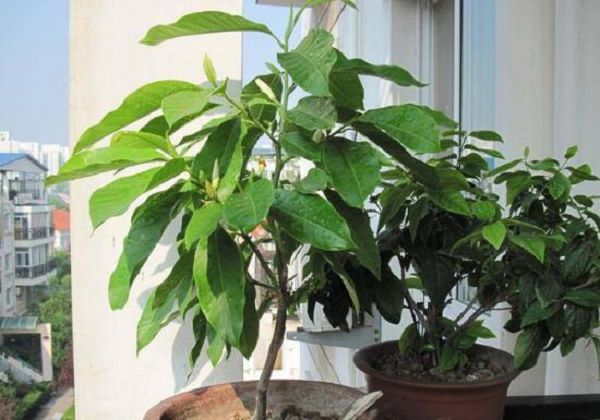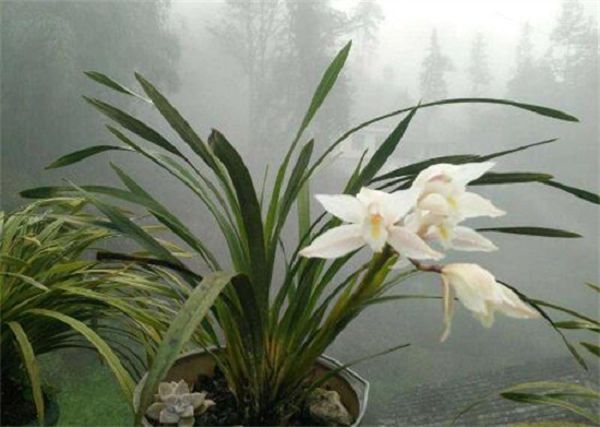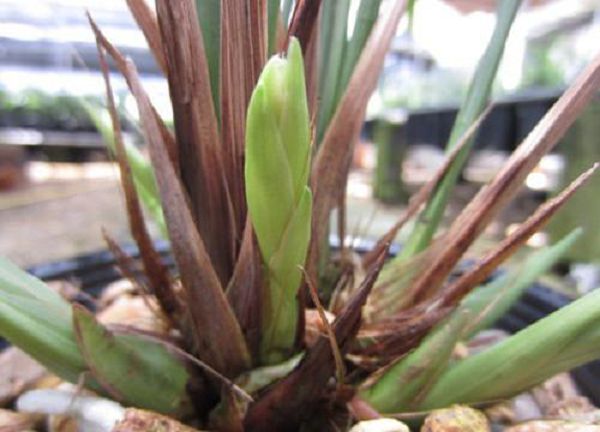How to cultivate white orchids, culture methods and matters needing attention of white orchids

White orchid is one of the common plants in life, which seems to have a delightful effect, so many people want to raise white orchids at home, but they don't know how to raise white orchids, so they give up the idea of raising white orchids. Now the editor has come to solve this trouble for you, teach you how to raise white orchids, and specially sort out the breeding methods and points for attention of white orchids for you. Let's take a look.
First, how to cultivate white orchids
White orchid is a tropical plant, usually planted outside, rarely raised at home, because the branches of the white orchid are tall and not very beautiful at home, but you can choose to raise them on the balcony. And the white orchid is only suitable for raising in the sunny place, in the dark and humid environment will cause the white orchid to wither, below you can take a look at the white orchid breeding methods and matters needing attention.
2. Culture methods and matters needing attention of white orchids
1. Growth environment
White orchids like a sunny and humid environment, although they need sufficient light, it is best to put them under a shaded shed in summer, remove the shelter when the light is suitable, and restore the shelter at noon when there is a strong light. therefore, the white orchid is more demanding for the growth environment, generally only put in a sunny place to thrive.
Note: lack of light, long-term shading or strong light exposure will cause poor growth of white orchids, resulting in less white orchids, light fragrance, and curly or withered leaves, so if you want to maintain the white orchids, you can only put it in a place where the sun is sufficient.
2. Watering
Watering is the key to how to cultivate white orchids. The soil in the basin is moist at once, but it is not necessary to water when the soil in the basin is slightly dry, because the root system is fleshy, afraid of stagnant water, and not resistant to dryness. Water once out of the house in spring and once every other day in summer to prevent smoke pollution, keep the leaf surface clean and spray wash the leaf surface if necessary to facilitate the normal development and growth of the plant.
Note: remember not to water every day, but you can often spray water on the leaves with a small spray can. In summer, it should be watered not less than three or four times a month, and not too much when watering, otherwise it will drown the white orchid directly.
3. Temperature
In the breeding method of white orchid in winter, it is necessary to do a good job of preventing frost and keeping warm, so the white orchid is not cold-resistant. Except for South China, other areas should enter the room for maintenance in winter. The indoor temperature is maintained above 12 degrees during the day and not less than 6 degrees at night. Otherwise, it is vulnerable to cold damage. Circulate the air and keep the soil moist in order to survive the winter safely.
Note: the white orchid is not suitable to survive in the cold environment, so the temperature is the key to whether the white orchid can survive the winter safely. If the temperature of the culture environment is too low, it will directly lead to the death of the white orchid.
4. Fertilization
The white orchid needs more fertilizer for its growth. When it grows vigorously, it should be fertilized every half a month or so, or 2-6 grams of compound fertilizer should be applied, thin fertilizer (cake fertilizer) should be applied frequently, but there is no need to apply fertilizer in winter, from new buds to June in the coming year. Fertilizer and water can be irrigated every 3-4 days, and every 5-6 days from July to September, and the number of fertilization can be changed according to the actual situation.
Note: fertilization can not make direct contact between fertilizer and roots, although watering should gradually go deep into the soil to prevent root burning.
5. Change the basin
The size of the flowerpot needs to be selected according to the crown size and age of the white orchid, which can make the growth environment of the plant more suitable. If you replace the new pot, you need to sprinkle a small amount of loose soil and base fertilizer in it, and then pour the water thoroughly. It is OK to wait for stable planting, and change the pot when the soil is slightly dry. The specific method is to let the pot tilt slowly or upside down.
Note: change the pot according to the crown size of the white orchid and the age of the tree and replace the appropriate size of the pot, in order to facilitate the vigorous growth of the plant, pour out the white orchid and move it into the new pot. The new basin (tank) should be padded with a small amount of loose soil in advance, then irrigated thoroughly, and the planting can be stable.
6. Pruning
Potted white orchids should choose the appropriate height, cut off the terminal buds and cut some side branches with shears. The apical buds are cut off to facilitate the length of lateral branches and buds to bloom, so the white orchid does not have to be pruned frequently, because in the white orchid culture method, it is only used for pruning when the white orchid grows to a certain height.
Note: there are not many branches of white orchids, except for withered branches, disease and insect branches and branches that disturb the tree shape, they generally do not need to be pruned. If there is no seed left after the flower fade, the fruit should be cut off so as not to consume nutrients.
7. Soil
Family potted white orchids should be cultivated in soils that are loose, permeable and rich in humus. Usually choose tile basin with good air permeability, purple sand basin (cylinder) or plastic basin with more bottom holes. The soil in the basin had better have a certain amount of granular soil of different sizes to facilitate water seepage and air permeability.
Note: potted white orchids should not use poorly permeable fine sand or heavy clay, because such soil seriously affects plant growth and is likely to directly lead to the death of white orchids.
Third, the florescence of white orchids
The white orchid has a long flowering period and can blossom all the year round when the environmental conditions are suitable, but it is afraid of drought, waterlogging, cold and alkali, so it is regarded as a more delicate and difficult to raise flowers in the north, so it is not suitable to survive in a cold environment, so if you want to know how to raise white orchids, you should put them in a sunny environment to survive.
- Prev

Is the white orchid poisonous? it's not poisonous, but you can't take too much aroma.
Is the white orchid poisonous? it's not poisonous, but you can't take too much aroma.
- Next

How can we make the orchid root strong? Two kinds of useful Orchid plants
How can we make the orchid root strong? Two kinds of useful Orchid plants
Related
- Is the orchid suitable for indoor use? Is it good for the body?
- How to prevent the empty root of orchids?
- What to do after the crab claw orchid is withered?
- Why are the leaves of orchids always yellow? Fertilizing and watering.
- Can the root of the gentleman orchid be saved if it is rotten?
- Diagnosis and treatment of cotton-blowing beetle insects in Cymbidium
- There is a way for a gentleman's orchid to rot.
- What is the most suitable temperature and humidity for the orchid?
- How to raise a gentleman's orchid? Cultivation techniques of Cymbidium
- How to prepare the nutritive soil for the cultivation of Cymbidium

